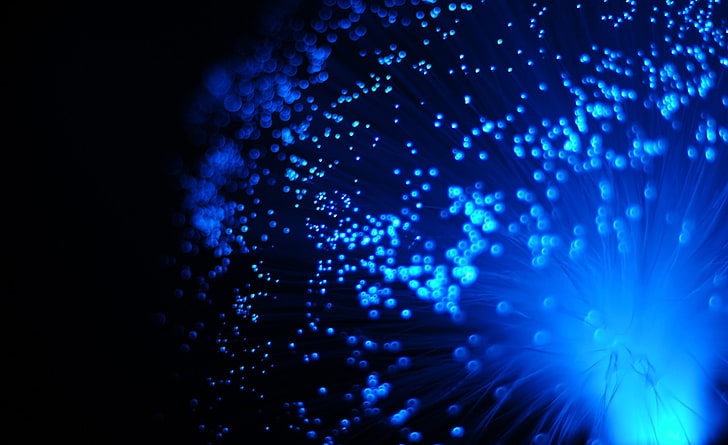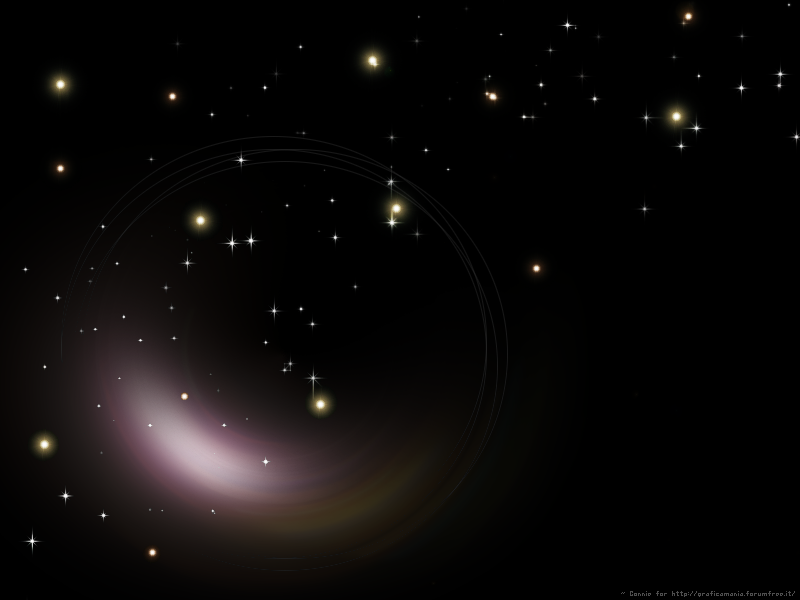An atomic clock is a clock whose timekeeping mechanism is based on the interaction of electromagnetic radiation with the excited states of certain atoms. Specifically, either a hyperfine transition in the microwaveregion, or an electron transition in the optical or ultraviolet region, of the emission spectrum of an atom is used as a frequency standard for the timekeeping element. Atomic clocks are the most accurate time and frequency standards known, and are used as primary standards for international time distribution services, to control the wave frequency of television broadcasts, and in global navigation satellite systems such as GPS.
The principle of operation of an atomic clock is based on atomic physics: it measures the electromagnetic signal that electrons in atoms emit when they change energy levels. Early atomic clocks were based on masers at room temperature. Since 2004, more accurate atomic clocks first cool the atoms to near absolute zero temperature by slowing them with lasers and probing them in atomic fountains in a microwave-filled cavity. An example of this is the NIST-F1 atomic clock, one of the national primary time and frequency standards of the United States.
The accuracy of an atomic clock depends on two factors:
- the temperature of the sample atoms—colder atoms move much more slowly, allowing longer probe times
- the frequency and intrinsic linewidth of the electronic or hyperfine transition. Higher frequencies and narrow lines increase the precision.
National standards agencies in many countries maintain a network of atomic clocks which are intercompared and kept synchronized to an accuracy of 10−9 seconds per day (approximately 1 part in 1014). These clocks collectively define a continuous and stable time scale, the International Atomic Time (TAI). For civil time, another time scale is disseminated, Coordinated Universal Time (UTC). UTC is derived from TAI but has added leap seconds from UT1, to account for variations in the rotation of the Earth with respect to the solar time.
https://en.wikipedia.org/wiki/Atomic_clock

A radio clock or radio-controlled clock (RCC), and often (incorrectly) referred to as an atomic clock is a type of quartz clock or watch that is automatically synchronized to a time code transmitted by a radio transmitter connected to a time standard such as an atomic clock. Such a clock may be synchronized to the time sent by a single transmitter, such as many national or regional time transmitters, or may use the multiple transmitters used by satellite navigation systems such as Global Positioning System. Such systems may be used to automatically set clocks or for any purpose where accurate time is needed. RC clocks may include any feature available for a clock, such as alarm function, display of ambient temperature and humidity, broadcast radio reception, etc.
One common style of radio-controlled clock uses time signals transmitted by dedicated terrestrial longwaveradio transmitters, which emit a time code that can be demodulated and displayed by the radio controlled clock. The radio controlled clock will contain an accurate time base oscillator to maintain timekeeping if the radio signal is momentarily unavailable. Other radio controlled clocks use the time signals transmitted by dedicated transmitters in the shortwave bands. Systems using dedicated time signal stations can achieve accuracy of a few tens of milliseconds.
GPS satellite receivers also internally generate accurate time information from the satellite signals. Dedicated GPS timing receivers are accurate to better than 1 microsecond; however, general-purpose or consumer grade GPS may have an offset of up to one second between the internally calculated time, which is much more accurate than 1 second, and the time displayed on the screen.
Other broadcast services may include timekeeping information of varying accuracy within their signals.
https://en.wikipedia.org/wiki/Radio_clock
A maser (/ˈmeɪzər/, an acronym for microwave amplification by stimulated emission of radiation) is a device that produces coherent electromagnetic waves through amplification by stimulated emission. The first maser was built by Charles H. Townes, James P. Gordon, and Herbert J. Zeiger at Columbia University in 1953. Townes, Nikolay Basov and Alexander Prokhorov were awarded the 1964 Nobel Prize in Physics for theoretical work leading to the maser. Masers are used as the timekeeping device in atomic clocks, and as extremely low-noise microwave amplifiers in radio telescopes and deep space spacecraft communication ground stations.
https://en.wikipedia.org/wiki/Maser

Absolute zero is the lowest limit of the thermodynamic temperature scale, a state at which the enthalpy and entropy of a cooled ideal gas reach their minimum value, taken as zero kelvins. The fundamental particles of nature have minimum vibrational motion, retaining only quantum mechanical, zero-point energy-induced particle motion. The theoretical temperature is determined by extrapolating the ideal gas law; by international agreement, absolute zero is taken as −273.15 degrees on the Celsius scale (International System of Units),[1][2] which equals −459.67 degrees on the Fahrenheit scale (United States customary units or Imperial units).[3] The corresponding Kelvin and Rankine temperature scales set their zero points at absolute zero by definition.
https://en.wikipedia.org/wiki/Absolute_zero

An atomic fountain is a cloud of atoms that is tossed upwards in the Earth's gravitational field by lasers. If it were visible, it would resemble the water in a fountain. While weightless in the toss, the atoms are measured to set the frequency of an atomic clock.[1]
https://en.wikipedia.org/wiki/Atomic_fountain

A quantum mechanical system or particle that is bound—that is, confined spatially—can only take on certain discrete values of energy, called energy levels. This contrasts with classical particles, which can have any amount of energy. The term is commonly used for the energy levels of the electrons in atoms, ions, or molecules, which are bound by the electric field of the nucleus, but can also refer to energy levels of nuclei or vibrational or rotational energy levels in molecules. The energy spectrum of a system with such discrete energy levels is said to be quantized.
https://en.wikipedia.org/wiki/Energy_level
In quantum mechanics, an excited state of a system (such as an atom, molecule or nucleus) is any quantum stateof the system that has a higher energy than the ground state (that is, more energy than the absolute minimum). Excitation is an elevation in energy level above an arbitrary baseline energy state. In physics there is a specific technical definition for energy level which is often associated with an atom being raised to an excited state.[citation needed][definition needed] The temperature of a group of particles is indicative of the level of excitation (with the notable exception of systems that exhibit negative temperature).
https://en.wikipedia.org/wiki/Excited_state

Microwave is a form of electromagnetic radiation with wavelengths ranging from about one meter to one millimeter corresponding to frequencies between 300 MHz and 300 GHz respectively.[1][2][3][4][5] Different sources define different frequency ranges as microwaves; the above broad definition includes both UHF and EHF (millimeter wave) bands. A more common definition in radio-frequency engineering is the range between 1 and 100 GHz (wavelengths between 0.3 m and 3 mm).[2] In all cases, microwaves include the entire SHF band (3 to 30 GHz, or 10 to 1 cm) at minimum. Frequencies in the microwave range are often referred to by their IEEE radar band designations: S, C, X, Ku, K, or Kaband, or by similar NATO or EU designations.
https://en.wikipedia.org/wiki/Microwave

In atomic physics, hyperfine structure is defined by small shifts in otherwise degenerate energy levels and the resulting splittings in those energy levels of atoms, molecules, and ions, due to interaction between the nucleus and electron clouds.
In atoms, hyperfine structure arises from the energy of the nuclear magnetic dipole moment interacting with the magnetic field generated by the electrons and the energy of the nuclear electric quadrupole moment in the electric field gradient due to the distribution of charge within the atom. Molecular hyperfine structure is generally dominated by these two effects, but also includes the energy associated with the interaction between the magnetic moments associated with different magnetic nuclei in a molecule, as well as between the nuclear magnetic moments and the magnetic field generated by the rotation of the molecule.
Hyperfine structure contrasts with fine structure, which results from the interaction between the magnetic moments associated with electron spin and the electrons' orbital angular momentum. Hyperfine structure, with energy shifts typically orders of magnitudes smaller than those of a fine-structure shift, results from the interactions of the nucleus (or nuclei, in molecules) with internally generated electric and magnetic fields.
https://en.wikipedia.org/wiki/Hyperfine_structure

Atomic electron transition is a change(or jump) of an electron from one energy level to another within an atom[1] or artificial atom.[2] It appears discontinuous as the electron "jumps" from one energy level to another, typically in a few nanoseconds or less. It is also known as an electronic (de-)excitation or atomic transition or quantum jump.
Electron transitions cause the emission or absorption of electromagnetic radiation in the form of quantized units called photons. Their statistics are Poissonian, and the time between jumps is exponentially distributed.[3] The damping time constant (which ranges from nanoseconds to a few seconds) relates to the natural, pressure, and field broadening of spectral lines. The larger the energy separation of the states between which the electron jumps, the shorter the wavelength of the photon emitted.
The observability of quantum jumps was predicted by Hans Dehmelt in 1975, and they were first observed using trapped ions of mercury at NIST in 1986.[4]
In 2019, it was demonstrated in an experiment with a superconducting artificial atom consisting of two strongly-hybridized transmon qubits placed inside a readout resonator cavity at 15 mK, that the evolution of some jumps is continuous, coherent, deterministic, and reversible.[5] On the other hand other quantum jumps are inherently unpredictable ie. nondeterministic.[6]
See also[edit]
- Burst noise
- Ensemble interpretation
- Fluorescence
- Glowing pickle demonstration
- Molecular electronic transition for molecules
- Phosphorescence
- Spontaneous emission
- Stimulated emission
https://en.wikipedia.org/wiki/Atomic_electron_transition
In quantum mechanics, an excited state of a system (such as an atom, molecule or nucleus) is any quantum stateof the system that has a higher energy than the ground state (that is, more energy than the absolute minimum). Excitation is an elevation in energy level above an arbitrary baseline energy state. In physics there is a specific technical definition for energy level which is often associated with an atom being raised to an excited state.[citation needed][definition needed] The temperature of a group of particles is indicative of the level of excitation (with the notable exception of systems that exhibit negative temperature).
The lifetime of a system in an excited state is usually short: spontaneous or induced emission of a quantum of energy (such as a photon or a phonon) usually occurs shortly after the system is promoted to the excited state, returning the system to a state with lower energy (a less excited state or the ground state). This return to a lower energy level is often loosely described as decay and is the inverse of excitation.
Long-lived excited states are often called metastable. Long-lived nuclear isomers and singlet oxygen are two examples of this.
https://en.wikipedia.org/wiki/Excited_state

The ground state of a quantum-mechanical system is its lowest-energy state; the energy of the ground state is known as the zero-point energy of the system. An excited state is any state with energy greater than the ground state. In quantum field theory, the ground state is usually called the vacuum state or the vacuum.
If more than one ground state exists, they are said to be degenerate. Many systems have degenerate ground states. Degeneracy occurs whenever there exists a unitary operator that acts non-trivially on a ground state and commutes with the Hamiltonian of the system.
According to the third law of thermodynamics, a system at absolute zero temperature exists in its ground state; thus, its entropy is determined by the degeneracy of the ground state. Many systems, such as a perfect crystal lattice, have a unique ground state and therefore have zero entropy at absolute zero. It is also possible for the highest excited state to have absolute zero temperature for systems that exhibit negative temperature.
https://en.wikipedia.org/wiki/Ground_state

Excited state intramolecular proton transfer (ESIPT) is a process in which photoexcited molecules relax their energy through tautomerization by transfer of protons. Some kinds of molecules could have different minimum-energy tautomers in different electronic states, and if the molecular structure of minimum-energy tautomer in the excited state is proton-transferred geometry between neighboring atoms, proton transfer in excited state can occur. The tautomerization often takes the form of keto-enol tautomerism.
Characteristic[edit]
Since a proton-transferred geometry is usually the minimum-energy tautomer only in the excited state and relatively unstable in the ground state, molecules that have ESIPT character may show extraordinarily larger Stokes shift than common fluorescent molecules, or exhibit dual fluorescence that shorter-wavelength one comes from the original tautomer and longer-wavelength one from proton-transferred tautomer.[1] However, there are some exceptional cases where ESIPT molecules have no dual luminescence or significantly red-shifted emission from proton-transferred tautomer, from various reasons.[2][3][4]
Rate of ESIPT process may slow down by deuterium substitution of hydrogen that is transferred in ESIPT, because the deuteration increases only mass of the transferred significantly while do not change electrostatic potential in the molecule substantially.[5] However the amount of rate change may lie in the range of 1~50, depending on the shape and size of potential energy surfaces of the molecule.[6]
Application[edit]
Based on characteristic that molecules usually have extraordinarily larger Stokes shift when ESIPT occurs, various applications have been developed using red-shifted fluorescence. Applications include turn-on photoluminescence sensor,[7] photochromic, non-destructive optical memory,[8] and white-light emitting materials.[9]
Because phenol does not form a ketal under normal conditions because it does not tautomerize to any useful extent; however under ESIPT in the presence of an alcohol, e.g. ethylene glycol, it became possible to trap 1,4-Dioxaspiro[4.5]deca-6,8-diene [23783-59-7].
https://en.wikipedia.org/wiki/Excited_state_intramolecular_proton_transfer

Quantum dots (QDs) are semiconductor particles a few nanometres in size, having optical and electronicproperties that differ from larger particles due to quantum mechanics. They are a central topic in nanotechnology. When the quantum dots are illuminated by UV light, an electron in the quantum dot can be excited to a state of higher energy. In the case of a semiconducting quantum dot, this process corresponds to the transition of an electron from the valence band to the conductance band. The excited electron can drop back into the valence band releasing its energy by the emission of light. This light emission (photoluminescence) is illustrated in the figure on the right. The color of that light depends on the energy difference between the conductance band and the valence band.
In the language of materials science, nanoscale semiconductor materials tightly confine either electrons or electron holes. Quantum dots are sometimes referred to as artificial atoms, emphasizing their singularity, having bound, discrete electronic states, like naturally occurring atoms or molecules.[1][2] It was shown that the electronic wave functions in quantum dots resemble the ones in real atoms.[3] By coupling two or more such quantum dots an artificial molecule can be made, exhibiting hybridization even at room temperature.[4]
https://en.wikipedia.org/wiki/Quantum_dot

An atom is the smallest unit of ordinary matter that forms a chemical element. Every solid, liquid, gas, and plasma is composed of neutral or ionized atoms. Atoms are extremely small, typically around 100 picometers across. They are so small that accurately predicting their behavior using classical physics—as if they were tennis balls, for example—is not possible due to quantum effects.
Every atom is composed of a nucleus and one or more electrons bound to the nucleus. The nucleus is made of one or more protons and a number of neutrons. Only the most common variety of hydrogenhas no neutrons. More than 99.94% of an atom's mass is in the nucleus. The protons have a positive electric charge, the electrons have a negative electric charge, and the neutrons have no electric charge. If the number of protons and electrons are equal, then the atom is electrically neutral. If an atom has more or fewer electrons than protons, then it has an overall negative or positive charge, respectively – such atoms are called ions.
The electrons of an atom are attracted to the protons in an atomic nucleus by the electromagnetic force. The protons and neutrons in the nucleus are attracted to each other by the nuclear force. This force is usually stronger than the electromagnetic force that repels the positively charged protons from one another. Under certain circumstances, the repelling electromagnetic force becomes stronger than the nuclear force. In this case, the nucleus splits and leaves behind different elements. This is a form of nuclear decay.
The number of protons in the nucleus is the atomic number and it defines to which chemical element the atom belongs. For example, any atom that contains 29 protons is copper. The number of neutronsdefines the isotope of the element. Atoms can attach to one or more other atoms by chemical bonds to form chemical compounds such as molecules or crystals. The ability of atoms to associate and dissociate is responsible for most of the physical changes observed in nature. Chemistry is the discipline that studies these changes.
https://en.wikipedia.org/wiki/Atom

The emission spectrum of a chemical element or chemical compound is the spectrum of frequenciesof electromagnetic radiation emitted due to an atom or molecule making a transition from a high energy state to a lower energy state. The photon energy of the emitted photon is equal to the energy difference between the two states. There are many possible electron transitions for each atom, and each transition has a specific energy difference. This collection of different transitions, leading to different radiated wavelengths, make up an emission spectrum. Each element's emission spectrum is unique. Therefore, spectroscopy can be used to identify elements in matter of unknown composition. Similarly, the emission spectra of molecules can be used in chemical analysis of substances.
https://en.wikipedia.org/wiki/Emission_spectrum

A frequency standard is a stable oscillator used for frequency calibration or reference. A frequency standard generates a fundamental frequency with a high degree of accuracy and precision. Harmonics of this fundamental frequency are used to provide reference points.
https://en.wikipedia.org/wiki/Frequency_standard

The quantum vacuum state or simply quantum vacuum refers to the quantum state with the lowest possible energy.
https://en.wikipedia.org/wiki/Quantum_vacuum_(disambiguation)
https://en.wikipedia.org/wiki/Zero-point_energy
https://en.wikipedia.org/wiki/Zero_crossing




No comments:
Post a Comment